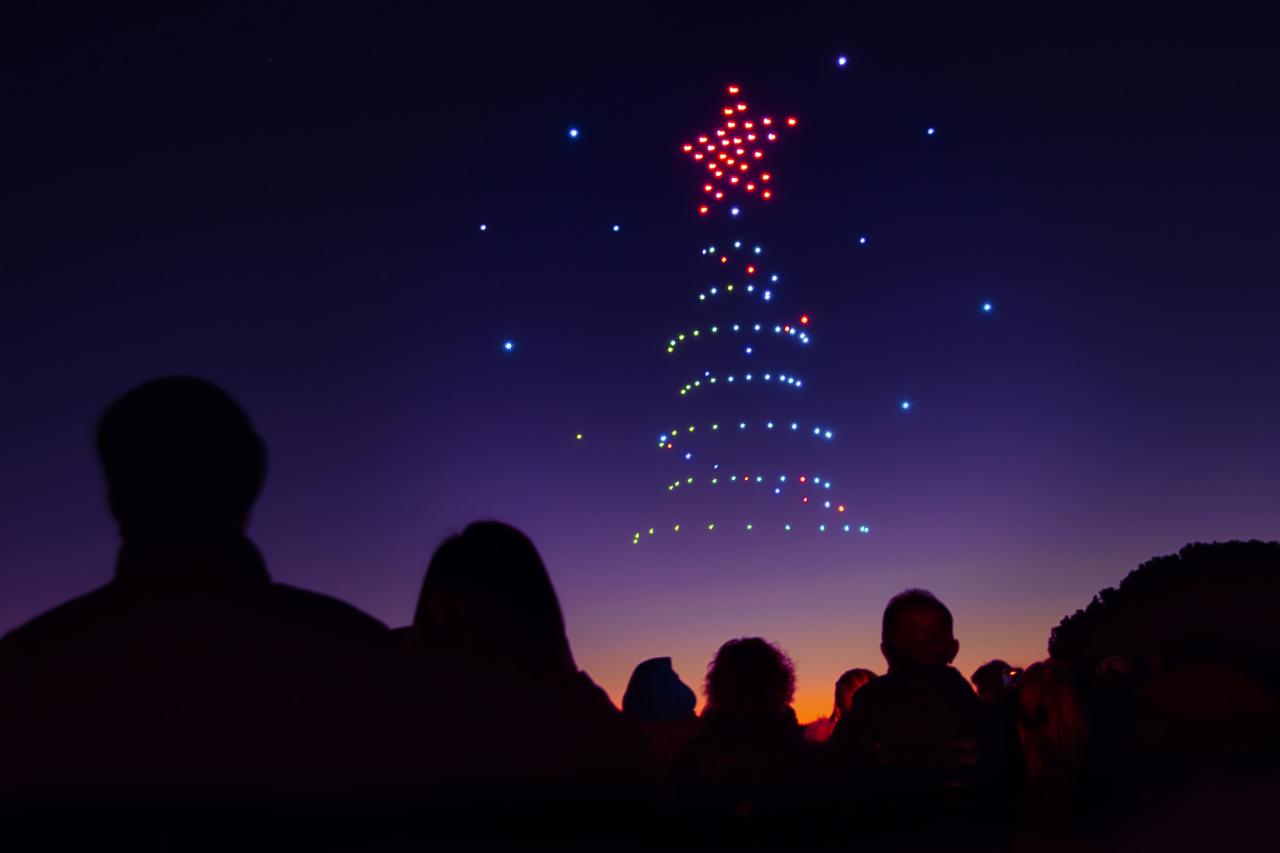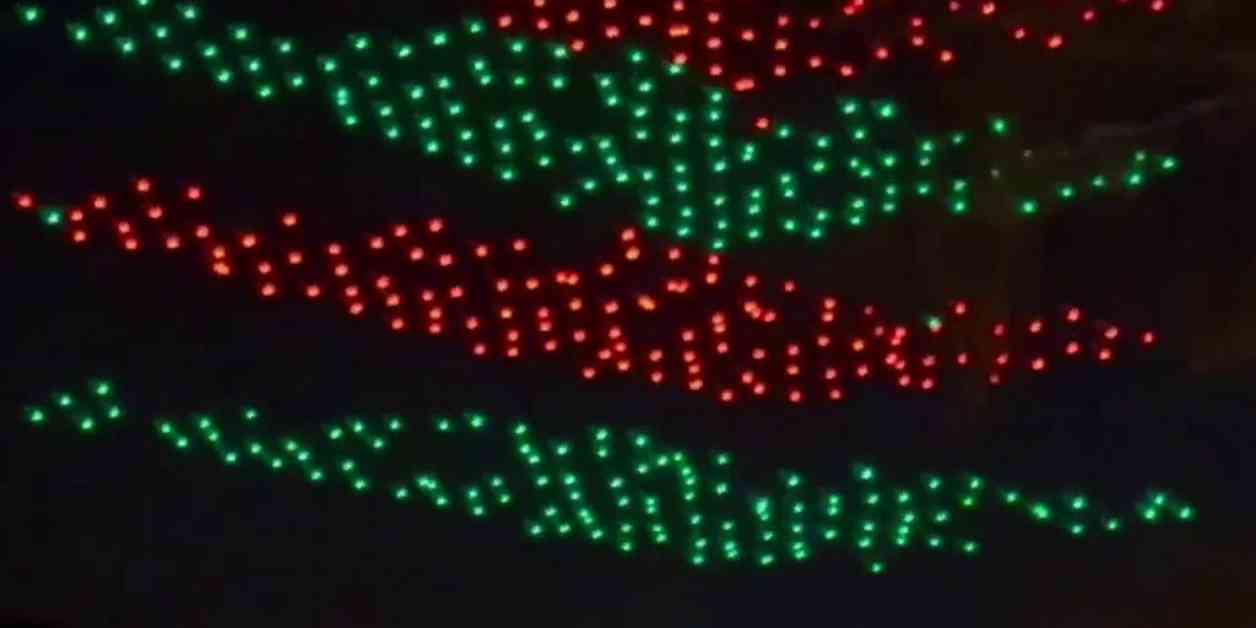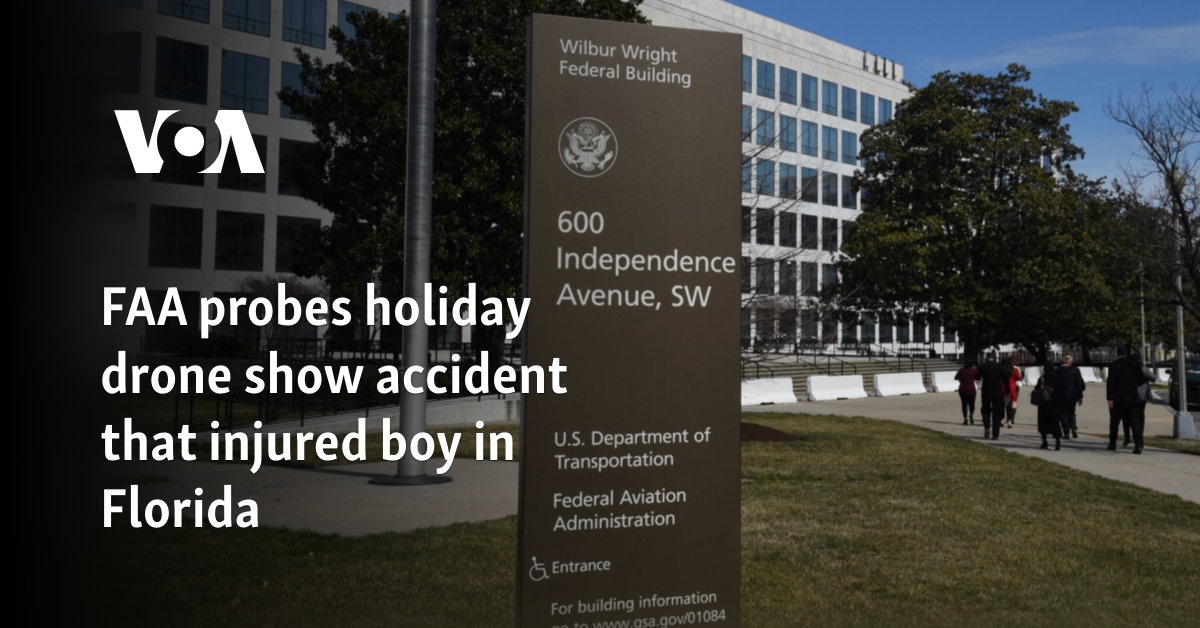Drone show accidents, while relatively infrequent, highlight the inherent risks associated with large-scale drone operations. This analysis delves into the multifaceted nature of these incidents, examining the technological, human, and environmental factors that contribute to their occurrence. From understanding the various types of accidents and their root causes to exploring effective safety protocols and emergency response strategies, we aim to provide a comprehensive overview of this critical area.
This exploration will cover a range of topics, including common accident types (malfunctions, collisions, human error), the role of weather, relevant safety regulations and certifications, technological vulnerabilities (GPS interference, software glitches), the importance of pilot training and communication, and effective accident response procedures. Through detailed examples and a frequently asked questions section, we hope to shed light on the complexities of ensuring safe and spectacular drone shows.
Drone Show Accidents: A Comprehensive Analysis
Drone shows, while visually spectacular, present inherent risks. Understanding the various factors contributing to accidents is crucial for enhancing safety protocols and minimizing future incidents. This analysis explores the different types of accidents, underlying causes, safety regulations, and response procedures to ensure safer and more reliable drone shows.
Drone show accidents, unfortunately, are a growing concern as the popularity of these spectacular displays increases. The potential for technical malfunctions or unforeseen circumstances is ever-present, highlighting the importance of rigorous safety protocols. For a detailed look at one such incident, you can check out this report on a recent drone show accident which serves as a cautionary tale for future events.
Understanding these failures allows for improved safety measures within the drone show industry.
Types of Drone Show Accidents

Drone show accidents can be broadly categorized into malfunctions, collisions, and human errors, each stemming from various contributing factors. The type of drone also plays a significant role in determining the failure mode and the severity of the accident.
| Accident Type | Description | Frequency (Estimated) | Contributing Factors |
|---|---|---|---|
| Malfunctions | Mechanical failures (motor, propeller, battery), software glitches, GPS signal loss. | High (relatively common due to the complexity of the technology) | Poor maintenance, outdated software, electromagnetic interference. |
| Collisions | Drones colliding with each other, obstacles, or the ground. | Moderate (can be prevented with proper spacing and flight planning) | Inadequate flight planning, poor communication, strong winds. |
| Human Error | Pilot error (incorrect programming, poor decision-making), communication failures. | Variable (highly dependent on training and experience) | Lack of training, fatigue, inadequate risk assessment. |
Different drone types exhibit varying failure modes. For instance, smaller, less robust drones might be more susceptible to mechanical failures in windy conditions, while larger drones may present greater collision risks due to their size and inertia. Weather conditions, particularly strong winds, rain, or fog, can significantly impact drone performance and increase the likelihood of accidents by reducing visibility, affecting GPS accuracy, and increasing the stress on drone components.
Safety Regulations and Protocols

Implementing stringent safety protocols is paramount for preventing accidents. These protocols should encompass pre-show checks, real-time monitoring, and post-show evaluations.
- Pre-show: Thorough drone inspection, flight path simulation, weather assessment, emergency response plan.
- During the show: Real-time monitoring of all drones, communication channels between pilots and ground crew, immediate response to any anomalies.
- Post-show: Data analysis, accident investigation (if applicable), maintenance and repair of drones.
Examples of existing regulations vary across jurisdictions. Some countries mandate specific certifications for drone pilots, while others focus on operational guidelines and airspace restrictions.
Recent drone show accidents highlight the complexities of large-scale aerial displays. Ensuring safety protocols are meticulously followed is paramount, especially considering the potential for widespread disruption. Interestingly, the level of coordination needed is reminiscent of tracking Santa, and you can find the NORAD Santa Tracker phone number if you’re curious about their logistical planning. Ultimately, both drone shows and Santa’s journey rely on precise timing and comprehensive tracking to avoid mishaps.
- The FAA (USA) has specific regulations for commercial drone operations, including those for drone shows.
- The UK Civil Aviation Authority (CAA) has similar regulations, emphasizing safety and airspace management.
- The European Union’s drone regulations (EASA) aim for standardization across member states.
Safety certification programs differ in their rigor and requirements. Some focus on theoretical knowledge, while others emphasize practical skills and experience. A robust program should include both theoretical and practical assessments, ensuring pilots are adequately prepared for the challenges of large-scale drone shows.
Technological Causes of Accidents

Technological failures contribute significantly to drone show accidents. Understanding these potential failure points is crucial for developing more reliable and safer systems.
Key technological components prone to failure include motors, propellers, batteries, flight controllers, and GPS systems. Software glitches, resulting from coding errors or inadequate testing, can lead to unpredictable drone behavior and potential collisions. GPS signal loss or interference can cause drones to lose their position, resulting in uncontrolled flight and potential accidents. This can be exacerbated by environmental factors such as buildings, trees, or electromagnetic interference from other devices.
Human Factors in Drone Show Accidents

Human error remains a significant contributor to drone show accidents. Pilot skill, training, and communication are critical factors.
Scenario: A pilot, under pressure to complete a complex sequence, rushes the programming process, overlooking a critical safety parameter. This oversight leads to a drone malfunction mid-flight, resulting in a collision with another drone.
Extensive training and experience are crucial for drone pilots involved in large-scale shows. Pilots must be proficient in handling various scenarios, including unexpected malfunctions and adverse weather conditions. Effective communication and coordination among pilots are also essential to prevent collisions and ensure the safe execution of the show. Lack of clear communication channels or miscommunication can lead to accidents.
Accident Response and Mitigation
Having a well-defined emergency response plan is vital for minimizing the consequences of a drone show accident.
- Immediate halt of the show.
- Assessment of the situation and the extent of damage.
- Emergency services contact (if necessary).
- Securing the accident site.
- Initiation of the accident investigation process.
Damage control involves quickly addressing the immediate consequences, such as retrieving damaged drones and ensuring the safety of spectators. Public relations efforts should focus on transparency and accurate communication with the public, media, and stakeholders. A thorough investigation is crucial to determine the root cause of the accident, providing valuable insights for future safety improvements.
Illustrative Examples of Accidents
Example 1: A drone show in a coastal city experienced a series of malfunctions due to unexpected strong winds. Several drones lost control, crashing into the water and causing minor damage. The investigation revealed inadequate wind assessment and a lack of contingency plans for adverse weather conditions.
Example 2: In an indoor drone show, a software glitch caused several drones to deviate from their programmed flight paths, resulting in a mid-air collision. The investigation identified a coding error in the show’s control software that was not detected during testing. This highlighted the importance of thorough software testing and redundancy in control systems.
Comparison: Both accidents underscore the importance of pre-flight checks, including thorough weather assessments and rigorous software testing. While Example 1 highlights the impact of external factors, Example 2 emphasizes the critical role of robust software development and testing in preventing accidents. Both incidents illustrate the need for comprehensive safety protocols that address both technological and environmental factors.
Ultimately, preventing drone show accidents requires a multi-pronged approach. Robust safety regulations, rigorous pilot training, advanced technological safeguards, and well-defined emergency response protocols are all crucial elements. By understanding the causes of past accidents and proactively addressing potential risks, we can strive towards a future where drone shows continue to amaze and inspire without compromising safety. Continuous improvement and a commitment to safety are paramount to the continued growth and success of this exciting technology.
Drone show accidents, while rare, highlight the inherent risks involved in these spectacular displays. The potential for malfunction is ever-present, emphasizing the need for rigorous safety protocols. For instance, consider the meticulous planning required for a successful event like the florida drone show , where a single error could have cascading consequences. Understanding these risks is crucial to preventing future drone show accidents and ensuring the continued enjoyment of these breathtaking performances.
Expert Answers: Drone Show Accident
What is the average cost of a drone show accident?
The cost varies greatly depending on the scale of the accident, the damage caused, and any legal ramifications. It can range from minor repair costs to substantial financial losses and legal settlements.
What insurance coverage is typically needed for drone shows?
Comprehensive liability insurance is essential, covering potential damage to property, injuries to spectators, and environmental impact. The specific coverage amount should reflect the scale and risk of the show.
Are there specific airspace regulations for drone shows?
Yes, airspace regulations vary by location and require prior authorization from relevant aviation authorities. Organizers must obtain necessary permits and adhere to strict guidelines regarding flight altitudes, zones, and communication protocols.
What are the long-term effects of a major drone show accident on public perception?
A major accident can significantly impact public trust and confidence in drone technology. Effective communication, transparent investigations, and visible commitment to safety are crucial for rebuilding trust.
